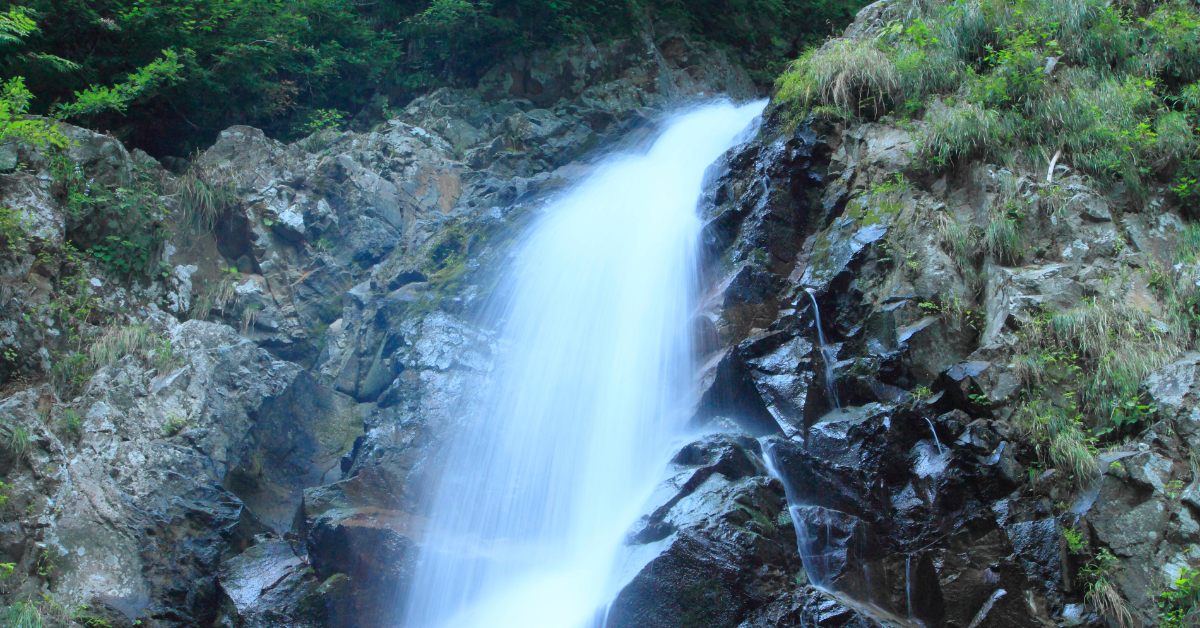Shirakami-Sanchi is a vast mountainous area spanning Aomori and Akita Prefectures. In 1993, it became one of Japan’s first UNESCO World Natural Heritage Sites. Its untouched beech forests are highly valued by Japanese people as a symbol of nature. This article explains how Japanese people perceive Shirakami-Sanchi, providing insights for foreign visitors.
What is Shirakami-Sanchi?
Shirakami-Sanchi covers approximately 130,000 hectares across Aomori and Akita. Of this, about 17,000 hectares are designated as a World Natural Heritage Site. It is one of the few areas in Japan where nature has remained virtually untouched.
Its most distinctive feature is the primeval beech forest. While many forests in Japan were logged and replanted, Shirakami’s beech forests have survived in their natural form since the Ice Age. To Japanese people, these beech forests are known as the “water-producing forests,” protecting river sources and supporting wildlife and human life alike.
Thus, Shirakami-Sanchi is more than a tourist spot. It is a symbol of conservation and represents Japan’s way of viewing nature.
Why Japanese People Value Shirakami-Sanchi
The high regard for Shirakami-Sanchi among Japanese people comes not only from its environment but also from its cultural and spiritual meaning.
| Key Point | Japanese Perspective |
|---|---|
| Rich Nature | The untouched beech forests are called a “miracle forest.” |
| Peace of Mind | Walking in the forest brings calmness and healing. |
| Cultural Heritage | The Matagi hunting culture and local folklore still survive. |
| Scientific Value | Used for ecological research and environmental education. |
| Seasonal Beauty | Different landscapes in spring, summer, autumn, and winter. |
Japanese people view Shirakami-Sanchi as not only a natural heritage but also a place of spiritual healing.
Enjoying Shirakami-Sanchi Through the Seasons
The seasons in Shirakami-Sanchi strongly influence Japanese impressions of the site. Autumn foliage and winter landscapes, in particular, leave a deep impression.
| Season | Japanese Impressions |
|---|---|
| Spring | Fresh green beech leaves shine, bringing a “sense of life’s breath.” |
| Summer | The dense green forest offers cool shade, a “natural summer retreat.” |
| Autumn | Entire mountains turn red and gold, praised as “one of the most beautiful in Japan.” |
| Winter | Snow-covered forests create a “fantastical other world.” |
Especially in autumn, many Japanese people say, “The autumn leaves of Shirakami-Sanchi are unparalleled.”
Access and Convenience
Reaching Shirakami-Sanchi is not easy from urban areas. However, Japanese people see this “inconvenience as part of its hidden charm.”
| Transportation | Travel Time | Features |
|---|---|---|
| Bus from Aomori City | ~2 hours | Accessible but with limited services |
| Car from Hirosaki City | ~90 minutes | Flexible but involves mountain roads |
| Car from Akita City | ~3 hours | Long drive but with scenic views |
| Shinkansen + Bus | ~4 hours | Designed for tourists |
For Japanese visitors, its relative inaccessibility is what preserves its tranquility, making the journey worthwhile.
Tourism Benefits and Challenges
Visiting Shirakami-Sanchi offers many advantages, but also challenges.
| Aspect | Benefits | Challenges |
|---|---|---|
| Natural Experience | Walking in a real primeval forest | Some trails lack infrastructure |
| Cultural Insight | Encountering Matagi traditions and folklore | Limited foreign-language guidance |
| Tourism Resource | Year-round seasonal appeal | Inconvenient access restricts visitors |
| Environmental Protection | Pride in heritage status | Risk of damage from overtourism |
Japanese people emphasize that “conservation must come before development.”
Activities for Foreign Visitors
For foreign travelers, Shirakami-Sanchi is not just a place to see nature—it offers experiences that connect deeply with Japanese culture and values.
| Activity | Features |
|---|---|
| Trekking | Walk through primeval forests and feel Japan’s natural origins |
| River Walks | Enjoy clear streams and riverbank landscapes |
| Birdwatching | Spot rare species such as black woodpeckers and Asiatic black bears |
| Local Cuisine | Taste mountain vegetables and regional dishes |
| Cultural Tours | Learn about Matagi traditions and rural life |
These activities let visitors grasp how Japanese people respect and coexist with nature.
Conclusion
For Japanese people, Shirakami-Sanchi is both a symbol of nature and a place of spiritual refuge. Its reputation can be summarized as:
- A world-class natural heritage site
- A representation of coexistence between people and nature
- A landscape where the beauty of four seasons can be fully experienced
- A model of balancing tourism and environmental protection
When foreign visitors come to Shirakami-Sanchi, they will not only enjoy its scenic beauty but also understand how Japanese people value and honor nature as part of their culture and spirit. Experiencing the forest in this way leads to a much deeper journey.






